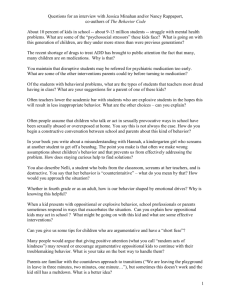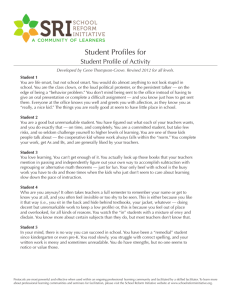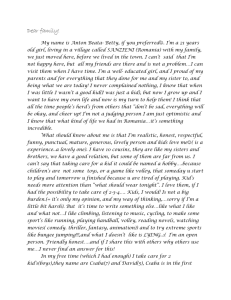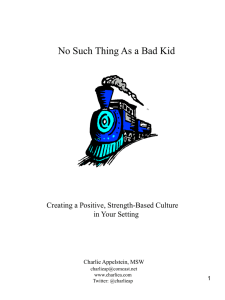Fun Sucker Presentation - Tennessee Opportunity Programs
advertisement
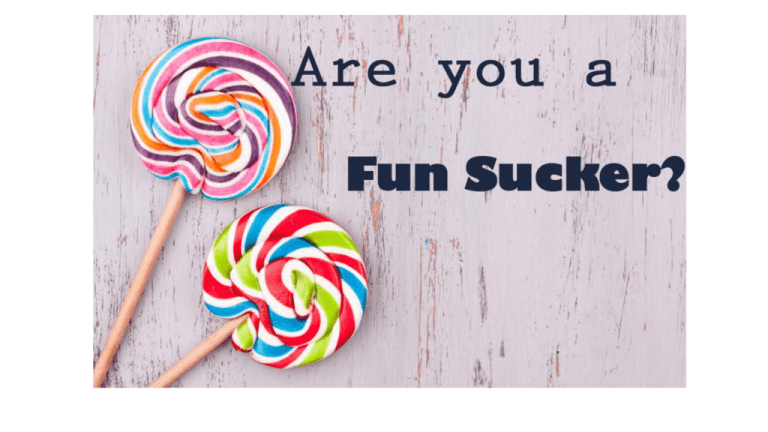
Afterschool above all else needs to be FUN! Maybe we need to take a little time to try and think a bit like a kid. What is fun? Is what is fun for us the same thing that is fun for our afterschool kids? Why is fun even necessary? Brain research suggests that fun is not just beneficial to learning but, by many reports, required for authentic learning and long-term memory. Neurologist and educator Judy Willis’s book “Research-Based Strategies to Ignite Student Learning: Insights from a Neurologist and Classroom Teacher” (ASCD, 2006) is one of many that have highlighted the learning benefits of fun. Here are just a few excerpts: The truth is that when the joy and comfort are scrubbed from the classroom and replaced with homogeneity, and when spontaneity is replaced with conformity, students’ brains are distanced from effective information processing and long-term memory storage. The highest-level executive thinking, making of connections, and “aha” moments are more likely to occur in an atmosphere of “exuberant discovery,” where students of all ages retain that kindergarten enthusiasm of embracing each day with the joy of learning. So fun actually seems to promote learning. It increases dopamine, endorphins, and oxygen! The human brain and body respond positively to laughter with the release of endorphin, epinephrine (adrenaline), and dopamine, and with increased breathing volume (more oxygen). When a lesson starts with humor, there is more alerting, and the subsequent information is attached to the positive emotional event as an event or flashbulb memory. More Excerpts on the Brain and Engagement Optimal brain activation occurs when subjects are in positive emotional states or when the material holds personal meaning, connects to their interests, is presented with elements of novelty, or evokes wonder. This is why attentiveness is so closely linked to positive emotional cueing and personal meaning. When there is connection to prior knowledge or positive emotional experience, new information passage through the limbic system will be enhanced. The thalamus will then “decide” to pay attention to the information. Eric Jensen, another noted author in the field of brain-based learning, echoed this link between engagement, dopamine, and learning, but stressed that learning worked best when the activity was intrinsically meaningful to the individual. He notes in his book Teaching with the Brain in Mind (ASCD, 2005): The task has to be behaviorally relevant to the learner, which is why the brain will not adapt to senseless tasks. So if fun actually leads to engagement, meaning and purpose, and, yes, learning, what is the answer for education? Should we create courses based only around what is deemed enjoyable by today’s generation? • No, but we should look at the process of how current courses are taught and delivered. Ultimately, we should resist the knee-jerk urge to declare something that is fun to be educationally inferior. • Fun means engagement, doing and learning what has meaning and purpose, and it means being challenged. Embracing this belief should have a profound effect on what and how we teach. Our Challenge…….. • How do you make literacy fun for those who don’t like to read? • How do you help a student enjoy a science lesson if it is their least favorite subject? • How do you inspire a kid who thinks they really are not very smart and they really dislike school? • How do you discover your students hidden talents? How to not be a • We are going to play a game. • You will be divided up by teams by school. We will give you the seed of a lesson. Your job will be to make it fun while still targeted to the needs of our AIM kids. • You will be making the skeleton lesson and creativity is encouraged. • We will then rate it on the Fun Sucker Scale to see if it would make the cut for afterschool. AIM Fun Scale • Does it meet the needs of the kids academically? • Will it engage the students? • Does it have any WOW factor or something that will be interesting to a kid? • Does it involve a lot of discussion, team work, group activities, etc instead of a lot of teacher lecturing? • Will students remember easily what was taught? • Is this something kids would be excited enough about that they would share it with their parents after AIM? #1 Create a lesson that meets the following standards • RL.2.3. Describe how characters in a story respond to major events and challenges. • RL.2.5. Describe the overall structure of a story, e.g. including identifying the problem or central conflict, describing how the beginning introduces the story, and the ending concludes the action. • RL.2.7. Use information gained from the illustrations and words in a print or digital text to demonstrate understanding of its characters, setting, and/or plot. • RL.8.3. Analyze how particular problems, lines of dialogue, or incidents in a story or drama propel the action, reveal aspects of a character, or provoke a decision. • RL.8.2. Determine a theme, problem, or central idea of a text and analyze its development over the course of the text, including its relationship to the characters, setting, events, and plot. #2 • Create a Reading Language Arts Lesson about a Hero or what a Hero is. • Be as creative as possible! You are planning for an hour and 10 minutes of instruction. • You have 10 minutes. Be ready to present your lesson to the whole group. We will vote on our favorite! #3 Create a lesson that meets the following standards • SL.3.5. Create and/or listen to engaging audio recordings of stories or poems that demonstrate fluid reading at an understandable pace. • SL.3.2. Determine the main ideas and supporting details of a text read aloud or information presented in diverse media and formats, including visually, quantitatively, and orally. • RL.3.7 7. Integrate and evaluate content presented in diverse media and formats, including visually and quantitatively, as well as through audio and oral presentations. • SL.8.2. Analyze the purpose of information presented in diverse media and formats (e.g., audibly, visually, quantitatively, and/or orally) and evaluate the motives (e.g., social, commercial, political) behind its presentation. • RI.8.7. Evaluate the advantages and disadvantages of using different mediums (e.g., audio, print or digital text, video, multimedia) to present a story, particular topic, or idea. • 7.4 Describe the changes in American life due to and exemplified in the new forms of media, art, and technology (e.g. radio) Lesson Units • The three challenges we just worked on are all related to our upcoming Super Heroes Unit. • http://www.tnopportunityprograms.org/LP%20Super%20Heroes.html • We would like all staff to read all of the units before our next meeting on the 22nd. • We also have a staff challenge between now and then!
